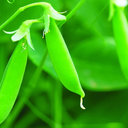Vitamin C treatment attenuates hemorrhagic shock related multi-organ injuries through the induction of heme oxygenase-1.
Schlüsselwörter
Abstrakt
BACKGROUND
Vitamin C (VitC) has recently been shown to exert beneficial effects, including protecting organ function and inhibiting inflammation, in various critical care conditions, but the specific mechanism remains unclear. Induction of heme oxygenase (HO)-1, a heat shock protein, has been shown to prevent organ injuries in hemorrhagic shock (HS) but the relationship between VitC and HO-1 are still ill-defined so far. Here we conducted a systemic in vivo study to investigate if VitC promoted HO-1 expression in multiple organs, and then tested if the HO-1 induction property of VitC was related to its organ protection and anti-inflammatory effect.
METHODS
Firstly, to determine the HO-1 induction property of VitC, the HO-1 level were measured in tissues including kidney, liver and lung of the normal and HS model of Sprague-Dawley (SD) rats after VitC treatment (100 mg/kg body weight). Secondly, to testify if VitC prevented HS related organ injuries via inducing HO-1, the HS model of rats were separately pre- and post-treated with VitC, and some of them also received Zinc protoporphyrin (Znpp), a specific HO-1 inhibitor. The HO-1 activity in tissues was tested; the organ injuries (as judged by histological changes in tissues and the biochemical indicators level in serum) and inflammatory response in tissues (as judged by the level of pro-inflammatory cytokines Tumor necrosis factor-α and Interleukin-6 ) were analyzed.
RESULTS
The HO-1 mRNA and protein level in kidney, liver, and lung were highly induced by VitC treatement under normal and HS conditions. The HO-1 activity in tissues was enhanced by both VitC pre- and post-treatment, which was shown to improve the organ injuries and inhibit the inflammatory response in the HS model of rats. Of note, the beneficial effects of VitC were abolished after HO-1 activity was blocked by Znpp.
CONCLUSIONS
VitC led to a profound induction of HO-1 in multiple organs including the kidney, liver and lung, and this property might be responsible for the organ protection and inflammation inhibitory effects of both pre- and post-treatment with VitC in HS.





